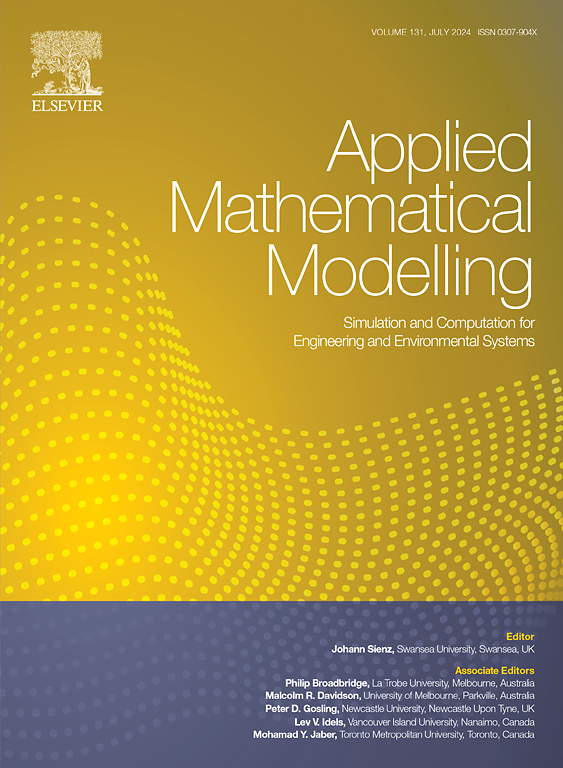农业供应链中原产地仓库位置、容量和价格决策优化的双层规划模型
IF 4.4
2区 工程技术
Q1 ENGINEERING, MULTIDISCIPLINARY
引用次数: 0
摘要
作为农业供应链“第一英里”的新基础设施,原产地仓库在减少农产品损失方面受到高度重视和支持。为此,本文建立了农产品原产地仓库建设与运营优化的双层规划模型。具体而言,上层供应链企业对原产地仓库的选址、容量和定价进行决策,而下层种植者则专注于确定农产品向各个原产地仓库的销售分配计划,以实现利润最大化。为了解决模型的计算复杂度问题,我们首先将原问题分解为三个子问题,分别是原产地仓库的选址问题、原产地仓库的运营问题和种植商的销售分配计划问题。随后,我们开发了一种结合启发式规则机制和古罗比求解器的混合自适应大邻域搜索算法。以云南石林地区为例,验证了该模型和算法的有效性。数值计算结果表明,原产地仓库的建设遵循“1 + N”的布局策略,即1个较大的核心仓库和N个较小的仓库,从而平衡物流效率和成本。此外,这些原产地仓库通过采用分层定价和优质溢价策略吸引更高质量的农产品,这对农业供应链公司和种植者都有利。本文章由计算机程序翻译,如有差异,请以英文原文为准。
A bi-level programming model for optimizing location, capacity, and pricing decisions of origin warehouses in an agricultural supply chain
As new infrastructures for the "first mile" in an agricultural supply chain, origin warehouses are highly valued and supported for reducing the loss of agricultural products. With this regard, we develop a bi-level programming model for optimizing the construction and operation of agricultural product origin warehouses. Specifically, the upper-level supply chain enterprise makes decisions regarding the location, capacity, and pricing of the origin warehouses, while the lower-level planters focus on determining the sales allocation plan of agricultural products to various origin warehouses to maximize their profits. To deal with the computational complexity of proposed model, we first divide the original problem into three subproblems related to the location, operation of origin warehouse and sales allocation plan of planters. Subsequently, we develop a hybrid adaptive large neighborhood search algorithm combined with the heuristic rule-based mechanism and the gurobi solver. Taking the Shilin area of Yunnan, China as a case study, we demonstrate the effectiveness of the proposed model and algorithm. The numerical results indicate that the construction of origin warehouses follows a "1 + N" layout strategy, featuring one larger core warehouse and N smaller warehouses, thereby balancing both logistics efficiency and cost. In addition, these origin warehouses attract higher quality agricultural products by adopting tiered pricing and premium-for-quality strategies, which benefit both the agricultural supply chain company and the planters.
求助全文
通过发布文献求助,成功后即可免费获取论文全文。
去求助
来源期刊

Applied Mathematical Modelling
数学-工程:综合
CiteScore
9.80
自引率
8.00%
发文量
508
审稿时长
43 days
期刊介绍:
Applied Mathematical Modelling focuses on research related to the mathematical modelling of engineering and environmental processes, manufacturing, and industrial systems. A significant emerging area of research activity involves multiphysics processes, and contributions in this area are particularly encouraged.
This influential publication covers a wide spectrum of subjects including heat transfer, fluid mechanics, CFD, and transport phenomena; solid mechanics and mechanics of metals; electromagnets and MHD; reliability modelling and system optimization; finite volume, finite element, and boundary element procedures; modelling of inventory, industrial, manufacturing and logistics systems for viable decision making; civil engineering systems and structures; mineral and energy resources; relevant software engineering issues associated with CAD and CAE; and materials and metallurgical engineering.
Applied Mathematical Modelling is primarily interested in papers developing increased insights into real-world problems through novel mathematical modelling, novel applications or a combination of these. Papers employing existing numerical techniques must demonstrate sufficient novelty in the solution of practical problems. Papers on fuzzy logic in decision-making or purely financial mathematics are normally not considered. Research on fractional differential equations, bifurcation, and numerical methods needs to include practical examples. Population dynamics must solve realistic scenarios. Papers in the area of logistics and business modelling should demonstrate meaningful managerial insight. Submissions with no real-world application will not be considered.
 求助内容:
求助内容: 应助结果提醒方式:
应助结果提醒方式:


